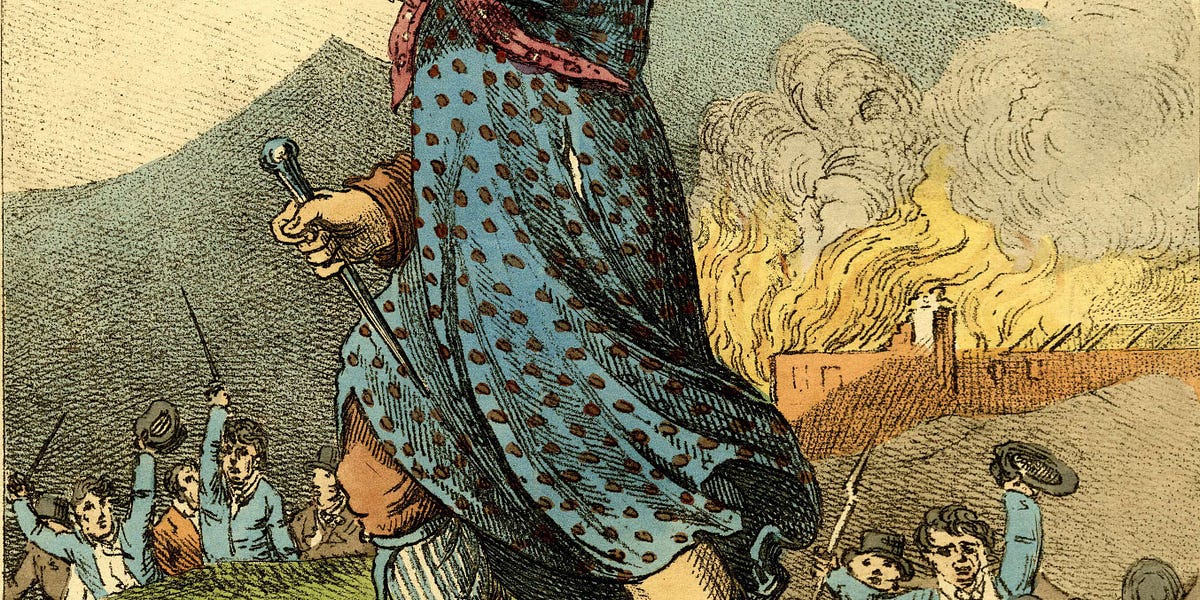What We Can Learn From the Luddites

🌈 Abstract
The article explores the lessons that can be learned from the 19th-century Luddite movement, a workers' movement that resisted the introduction of new technologies, and how their concerns relate to the current debates around the impact of technology on society.
🙋 Q&A
[01] What We Can Learn From the Luddites
1. What was the Luddite movement and what were their concerns?
- The Luddite movement was a 19th-century workers' movement that resisted the introduction of new technologies, particularly automated machines, arguing that their purpose was to lower wages and eliminate jobs.
- The Luddites opposed the entrepreneurial and political pressure to reinvent labor and economic life around the new factory-based wage labor system.
- Their resistance took many forms, including smashing and sabotaging the new machines, burning factories, and even murdering antagonistic manufacturers.
2. How do the Luddites' concerns relate to the current debates around technology and progress?
- The article argues that the relationship between technological change and human progress is often less clear than the optimistic views of tech leaders like Sam Altman and Marc Andreessen suggest.
- The article draws parallels between the "dark satanic mills" of the early 1800s and the hidden and horrific labor conditions in modern-day manufacturing facilities like Apple's Foxconn factory.
- It suggests that automation, unchecked by forces independent from industry, does not always lead to less work but can proliferate forms of "precarious, lower-paying or less-protected work."
[02] The Original Techno-Pessimists?
1. How does the article characterize the Luddites' resistance to technological change?
- The article argues that the Luddites' resistance was not a blanket hatred of new technologies, but rather a resistance to the idea that technology always equals progress.
- Their purpose was to keep technology working with and for human activities, rather than against them.
- The Luddites cherished their existing way of life and took up arms to defend it against the changes brought about by new technologies.
2. How does the article view the interpretations of the Luddites by modern-day "neo-Luddites"?
- The article suggests that modern-day "neo-Luddite" interpreters often invest too much weight in the aesthetics and politics of a "usable past" when connecting the Luddites' struggles to the present.
- It cautions that connecting the past and present in a shared continuum of resistance to technological change can blind us to the more complicated realities of the present.
[03] Modern-Day Luddites
1. What are the key parallels the article draws between the Luddites' concerns and modern-day issues?
- The article suggests that the extreme precarity of working conditions in the early 1800s, enabled by an unregulated labor market, is not so different from the "ghost work" and horrific labor conditions in modern-day manufacturing facilities like Foxconn.
- It argues that automation, unchecked by forces independent from industry, can proliferate forms of "precarious, lower-paying or less-protected work" rather than leading to less work.
2. What are the challenges the article identifies for a modern-day "neo-Luddite" political movement?
- The article suggests there is a troubling disconnect between the important possibilities of novel regulation and the faddish feeling of many self-styled neo-Luddites.
- It questions whether a neo-Luddite coalition can cut across political differences and ally with those on the right, as exemplified by the conservative historian Gertrude Himmelfarb's own "neo-Luddite" dissent.
- The article cautions that a neo-Luddite politics risks turning inward, becoming a historically chic form of lifestyle consumerism detached from formal political action.
[04] The Technologically Mediated Future
1. What is the article's view on the role of history and the Luddites in envisioning the future?
- The article suggests that while the memory of the Luddite struggle can serve as an important political project, history can also be a "prison of the imagination."
- It argues that creating open, collaborative, and pluralistic channels for envisioning other technologically mediated futures is more important than relying too heavily on the Luddites and their students as a source of inspiration.
2. What does the article propose as a way forward in addressing the relationship between technology and progress?
- The article suggests that a humane, inhabitable future, where technologies are tools for living rather than totems of progress, is "eminently desirable."
- It argues that this will require "fewer history lessons and many more humble, iterative attempts to think, design and live with, rather than against, those who believe technology drives human progress."